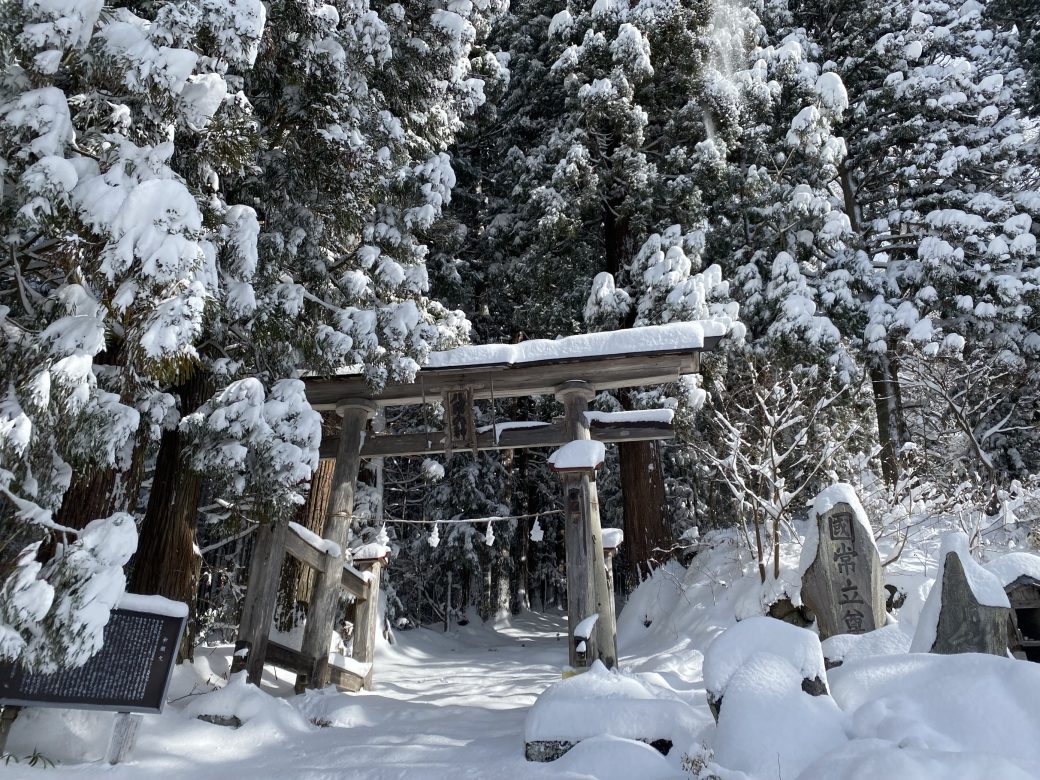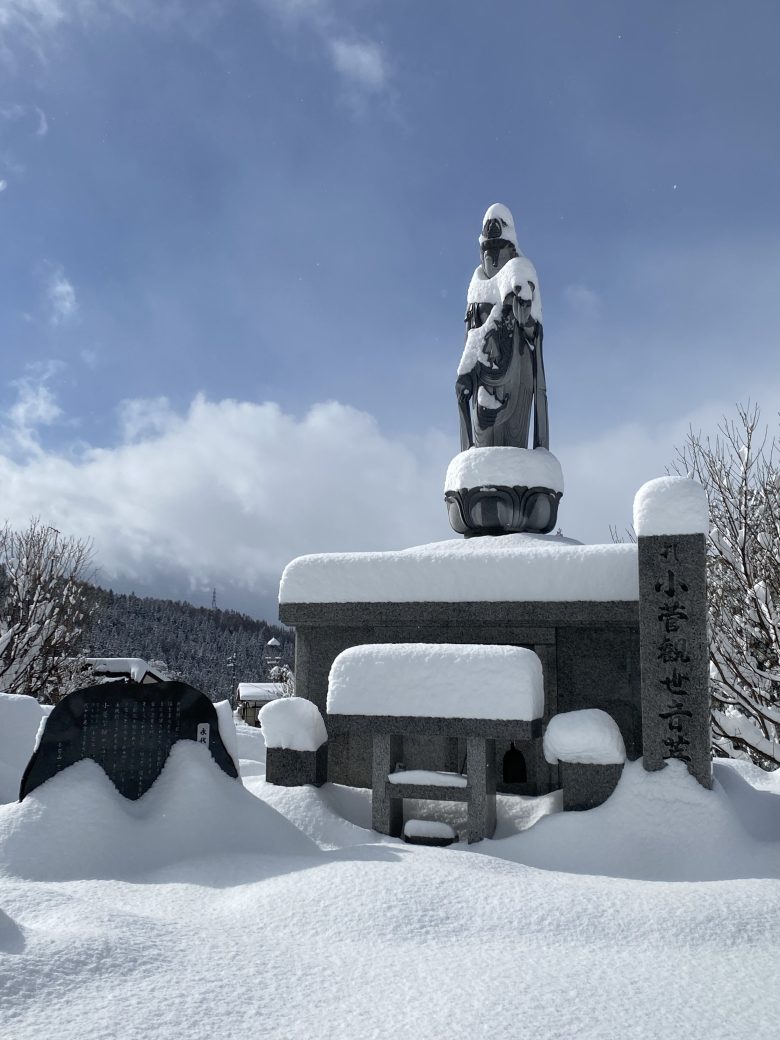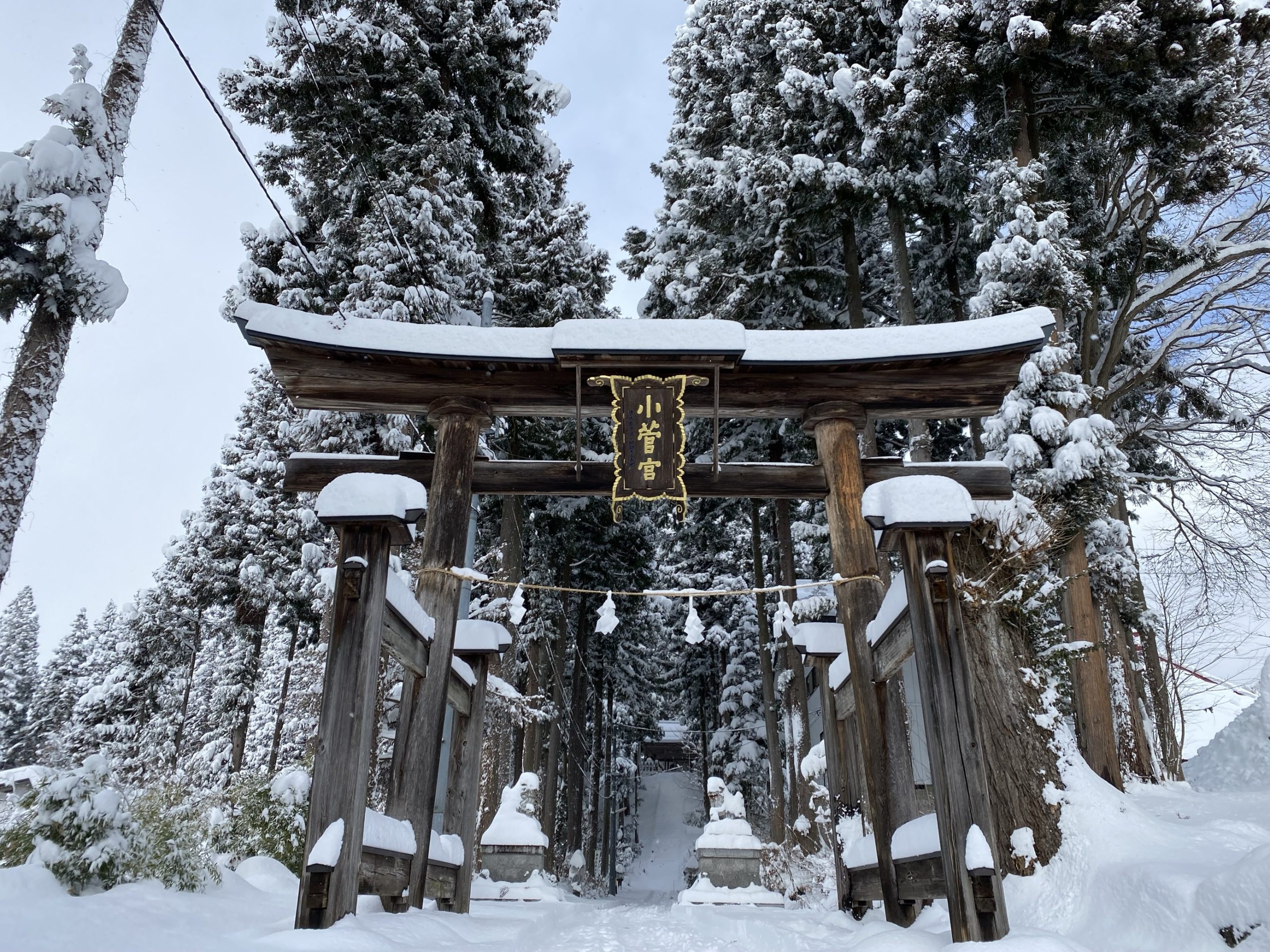Winter in Iiyama: Weathering, Together
Posted by Sarah
Japan’s relatively small size and the richness of its culture makes for a country that overflows with personality and opportunity, where every road splits off into some unseen, unwritten adventure. Though one could easily be lost forever in the towering concrete jungles of Tokyo, Osaka, or Kyoto, sometimes the most overlooked roads lead to the most exciting stories.
Yours starts here, tucked away between the stoic, immortal mountains of Nagano that have presided over and protected the valley for untold ages, awaiting to bear the formidable snowfall of another winter as they always have, and now awaiting you as well. Welcome to Iiyama, a paradise at any time of year whether the farmlands run green or golden, whether the rice fields are irrigated with the mirror-still floods of spring or consumed by the melodies of spawning frogs and woodland birds as summer comes. Yet, it is in the winter that Iiyama shows us what makes it really special, the bonds of community that unite its people.

A Sense of Community in Japan
Each year, the hard-working farmers and business owners of Iiyama begin their well-practised rituals of supporting, reinforcing, and interconnecting with each other to rise to the challenge of the harsh, cold change that comes in late-December. The town of Iiyama itself, as well as the many neighbouring farms, are the homeland to a quiet and vibrant way of life, and many farmsteads here have weathered the intense storms of winter for hundreds of years. Blanketed in pristine snow sheets, when the streets are quiet and the snow is soft, it’s hard to tell that this beauty has been hard-fought for, that the preservation of the area’s shrines, businesses, and families has been hard-won. But it has.
Each neighbourhood in Iiyama has its own curious ties of friendship and mutual understanding. Across the bridge from the town centre in Kosuge, for example, the process for applying to and earning residency is a battle. It has to be, since when the snow blocks your path to the market on a heavy night of howling wind, you won’t regret having surrounded yourself with people who truly care, people who have stood where you stand, and are ready to set their snow machines to work in setting you free.
To live in any neighbourhood in Iiyama is to have a certain expectation on your shoulders. When the time is right, the residents here are called to sweep the ancient shrines of wet, autumn leaves, or saw the weeds overrunning the irrigation canals into stubs. Yes, there is an expectation on them, but there is also the comfort that they won’t weather the storm alone. At no time of year is this principle more important than winter, whose striking beauty is made all the more impressive by those that have shouldered the bracing cold and the walls of snow to keep it, both the custodians of Iiyama’s natural legacy and the source of its charm.

Snapshot: The Dosojin Fire Festival
It’s a cold, misty morning when you wake up. The embers from the wood-stove still half alight beside you, you rise to your feet, and watch as the early hours of the day steal the fog back behind the mountains, and the morning mixture of grey and blue retake the sky. By the time you leave the house, the sky has already returned to a confident, gleaming cobalt, reflecting as always from the fresh snowfall that crunches underfoot. Today is the day of the Dosojin, the festival of burning pyres in reverence to ancient deities, those that bring you and your neighbours luck. The early forty year-olds among them, living their unlucky years as tradition tells it, have had this moment on their minds since the pyres were erected months ago, before the first snowfall. Now, having been buried again by a squall, the pyres lay dormant and white, ready for their matchstick forms to be uncovered, ready to be burned red in their first and last moments of glory.
You could go to Nozawa tonight and see the world-famous Dosojin festival there, where the players mock battle with torches and fire, shouting into the night from the top of massive wooden offerings. You could go there instead, where a hundred people worked together to build those offerings, where a hundred more would clap and sing in the old ways, and drones would record the whole thing to YouTube. But today, you decide to keep things local. You helped build your neighbourhood pyres yourself, right there in the centre of the rice field outside your home, nestled in the trees by the hill. You placed the sticks with your neighbours, and ducked under the careless ropes that the children ran around and around with to tie it all together. As the afternoon comes, the smoke rises into the sky, and a great blaze contends with the cold of the valley itself to bring you warmth and comfort. Dried squid is cooked on the blaze, and as you help hand out the mandarin oranges from the last harvest to your neighbours, the smell is intoxicating. Cheers erupt as the first bottle of local sake is uncapped, and you notice the brewer himself stands shoulder-to-shoulder with the others, a legend maybe, but as much a part of the community as anyone else. The embers burn, night falls, and distant fires alight on the horizon, as your story repeats again and again as far as you can see.

Winter Traditions, New And Old
The Dosojin itself is a fascinating cultural experience when the local pyres are erected in November and when they’re burned in mid-January. Yet Iiyama’s winter offerings go far beyond, betraying that this humble valley has far more to offer than what first meets the eye. The Kamakura-no-Sato (snow hut village), for instance, a tradition only two decades in the making, is another one of many reasons that Iiyama stands out so well, even among other rural areas in Japan. Rounded snow huts are constructed with space for tables and chairs inside, and local hot-pot and sweets are enjoyed within them as the high winds of the mountain glance from their thick walls and whistle on by. At night, paper lanterns are lit inside, and the mountain glows from the mouths of the huts.
Whether traditions young or old, Iiyama doesn’t discriminate. The area itself is an odd blend of long-standing practices and refreshingly modern luxuries. You may spend hours wandering the grounds of the shrines there or stopping to hear the enchanting back-and-forth recitations of Buddhist monks that call out to each other from across the street as they perform the odd patrol. Then, further in the day, you may sit down at a curry restaurant at roadside station Hana-no-eki (station of the flowers) and find yourself being served by a can-shaped sliding robot with a digitally animated face and cat ears. There’s a little something for everyone.
Recent Posts
- Street Food, Seafood & More: Japan’s Most Delicious Markets
- The Future of Pearls: Japan’s Commitment to Sustainable Pearl Cultivation
- The Nakasendo Trail: Where History Meets Adventure
- Japanese Hot Springs: A Beginner’s Guide to Onsen Etiquette
- Rural Japan at Its Finest: Why Niigata Will Capture Your Heart

